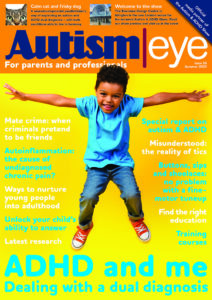Air pollution has come under the spotlight again as a possible factor in the increasing number of children being diagnosed with autism.
 In what is billed as the largest study of its kind, researchers at University of California Los Angeles (UCLA) found that babies exposed to air pollution in the womb were more likely to develop autism than those whose mothers spent their pregnancy in ‘clean’ air.
In what is billed as the largest study of its kind, researchers at University of California Los Angeles (UCLA) found that babies exposed to air pollution in the womb were more likely to develop autism than those whose mothers spent their pregnancy in ‘clean’ air.
The study is also the first to suggest a possible link between autism and ozone levels. Los Angeles has the highest ozone levels in the US and on 137 days of the year is reported to violate federal health standards.
The UCLA’s team of scientists compared levels of air pollutants, mostly related to vehicle traffic, of 7,693 babies during pregnancy gestation who developed autism and 75,635 babies without the condition.
The babies, born between 1995 and 2006 in Los Angeles, were all screened for their exposure to toxins. Those infants at the 75th percentile of exposure to toxins had an 8 per cent to 10 per cent higher risk of developing autism than babies at the bottom 25th percentile, according to the study.
Dr Beate Ritz, chair of the UCLA’s Epidemiology Department and the study’s senior author, advised expectant mothers to avoid sitting in traffic when air pollution is at its worst.
The new UCLA research follows a 2010 study by the Saban Research Institute in Los Angeles, which found that children born to mothers who were living near a freeway during pregnancy were more likely to receive a diagnosis of autism than those whose mothers lived further away. Roughly 10% of the children lived around 1,000 feet (305 metres) from a freeway at birth – and were found to be twice as likely to go on to be diagnosed with autism.
The sample of children in the Saban study – 304 with autism and 259 controls – was much smaller than with the new UCLA study.
Published: 12 March 2013















